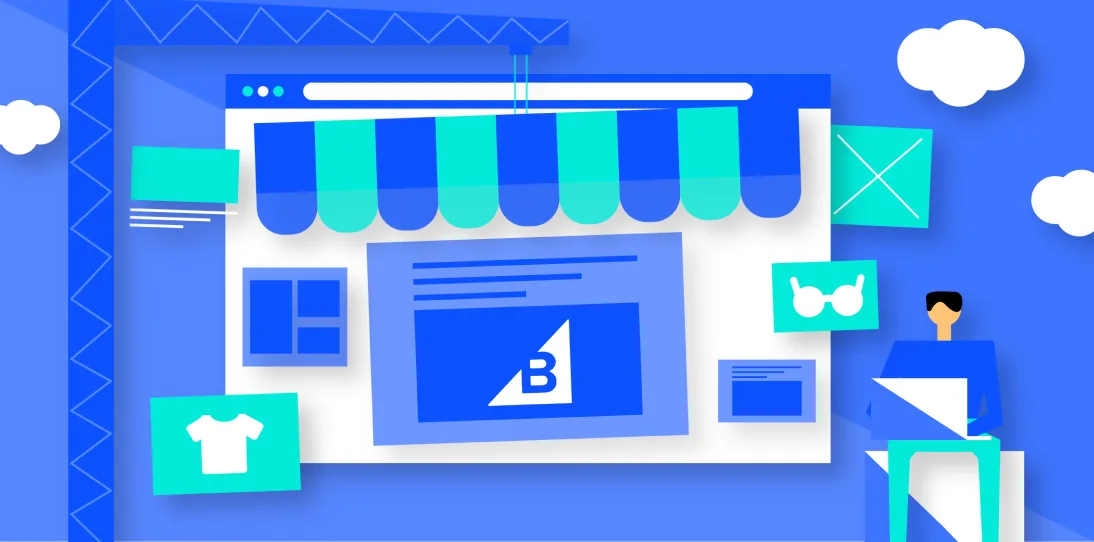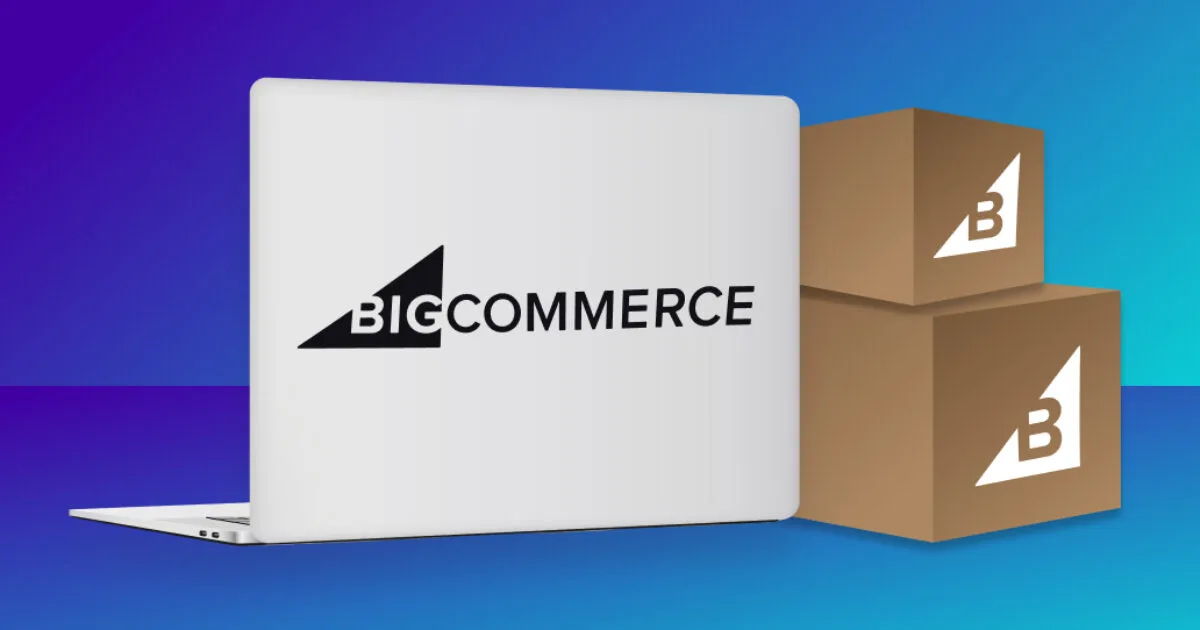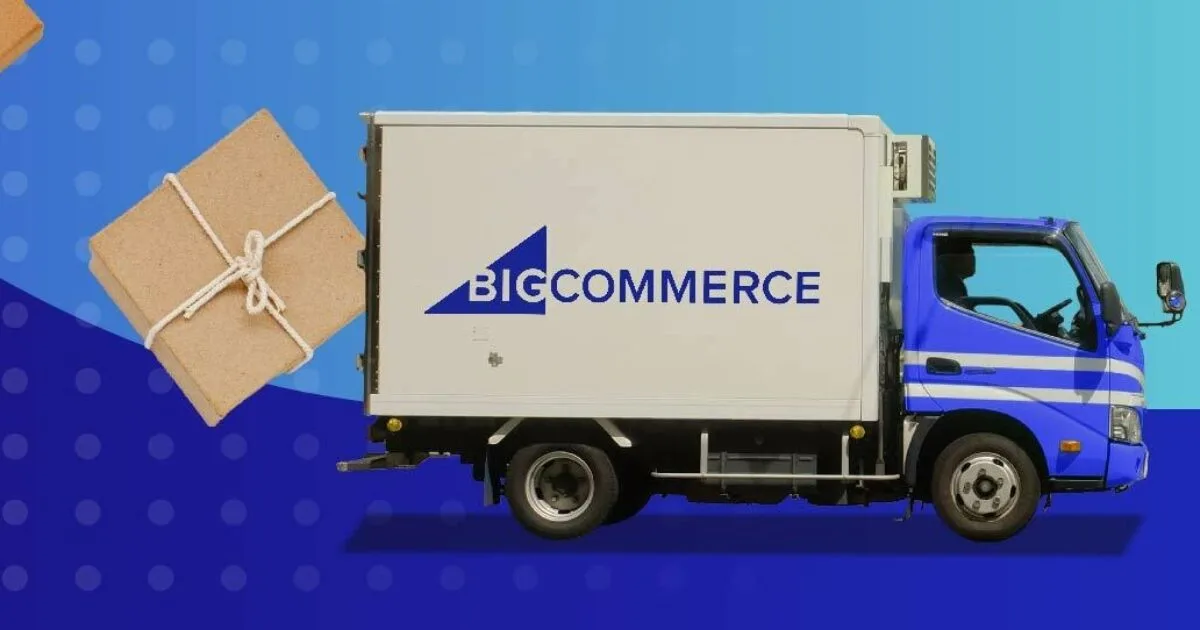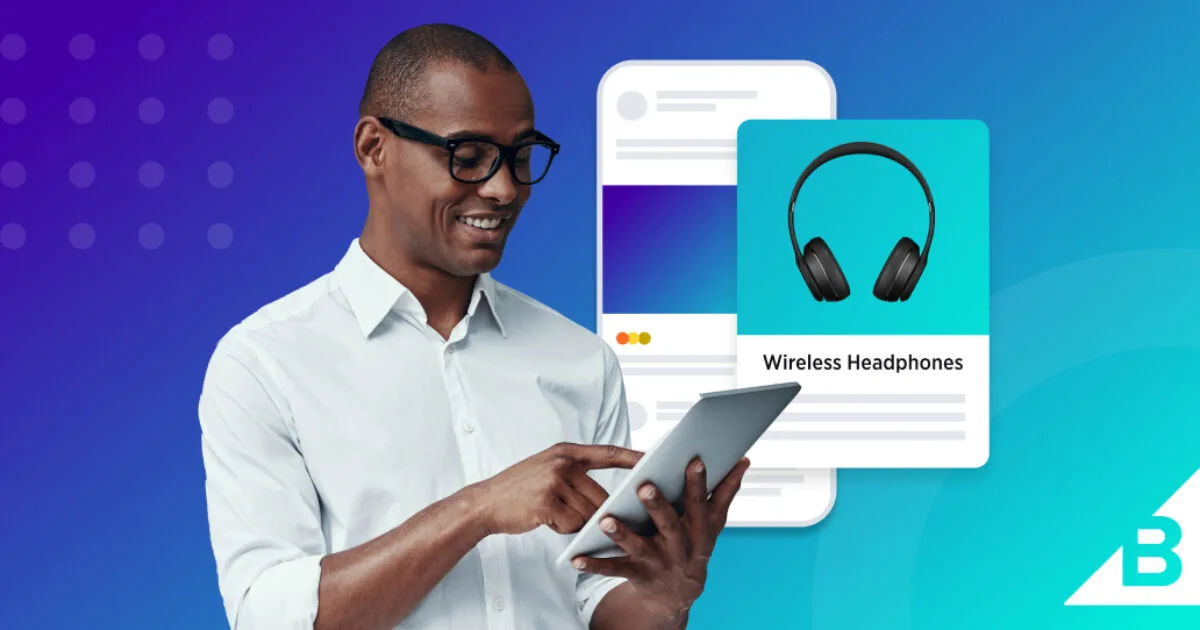Omnichannel Retail Strategy: How to Meet the Needs of Today’s Shoppers
Omnichannel retail is no longer a nice-to-have. As more and more consumers have moved to online shopping in the wake of the COVID-19 pandemic, it has transformed into a must-have for successful ecommerce businesses.
According to research by Statista, almost one in two ecommerce decision-makers in Europe and North America believed omnichannel strategies to be very important in 2021.
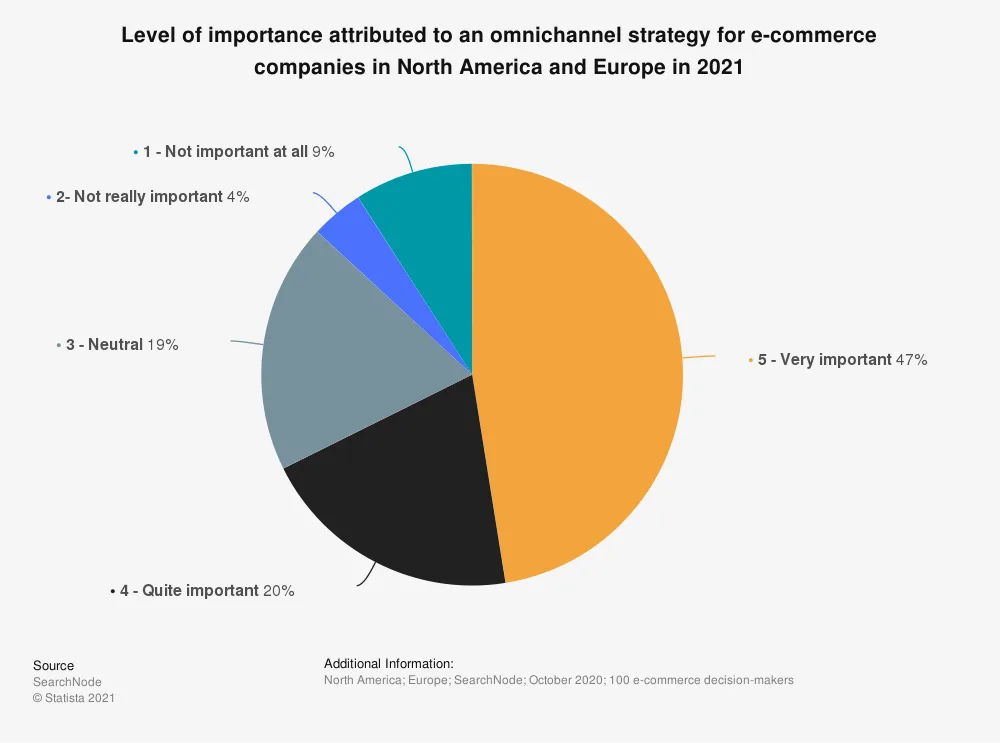
Furthermore, forecasters expect multichannel— often used interchangeably with omnichannel — sales to make up close to 46% of all ecommerce sales by 2023, up from 40.4% in 2019.
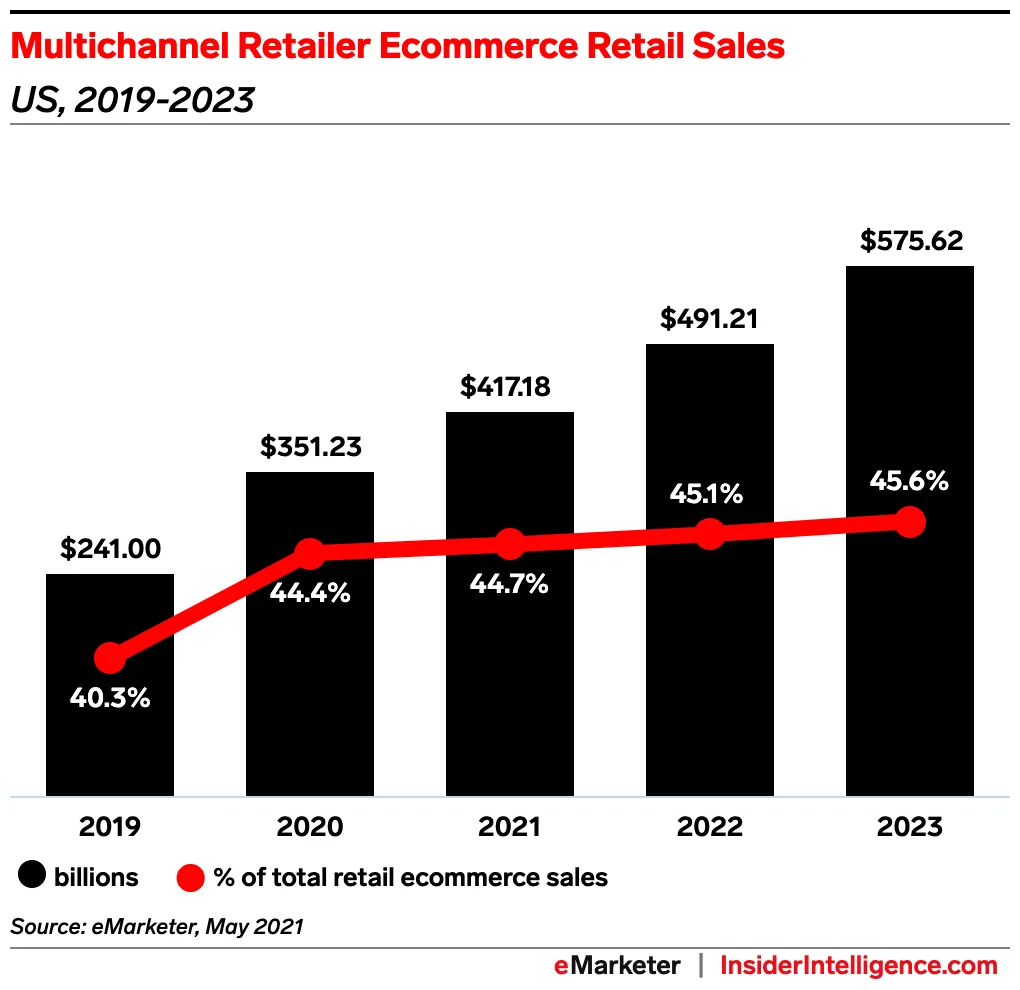
Omnichannel commerce is a strategy that provides a seamless shopping experience from the first touchpoint to the last, regardless of the channel your customer is using. It’s an approach that has already begun to show dividends for organizations.
Retailers selling through a single branded ecommerce site such as BigCommerce saw a 58% revenue growth after adding a marketplace.
Today, consumers are discovering brands in brand new ways and seeking contemporary conveniences to guide their shopping decisions.
This article will cover the integration of online and offline channels — and all your operations — to deliver a cohesive and comprehensive experience across touchpoints.
Get expert insights on the go with our biweekly audio series where global thought leaders discuss all things ecommerce — from industry news and trends to growth strategies and success stories.
What is Omnichannel Retail?
Omnichannel retailing refers to transacting across multiple channels, which may include marketplaces, social channels, in brick-and-mortars and more. Omnichannel has become a popular buzzword, but it’s not just another way of saying that you sell on multiple channels.
Let’s look at the sometimes-subtle differences among omnichannel, multichannel and single-channel commerce:
Omnichannel retailing.
A genuine omnichannel approach must deliver a consistent brand experience everywhere you sell to meet your customers where they are and build relationships that transcend channels. It should include an emphasis on optimizing your business model through channel diversification and comprehensive integration of your data and systems.
Within the retail space, there are growing expectations from customers that can only be solved through omnichannel retailing. According to a study by UC today, nearly 90% of consumers want an omnichannel experience. Even more indicative of this shift is that 15 years ago, the average consumer used two touch points when purchasing an item. That number today?
Almost six touchpoints.
The benefits of an omnichannel approach are not only immediate, in that you are able to open your business to multiple channels, but have become something customers desire — and even demand.
Multichannel retailing.
Like omnichannel, multichannel commerce refers to selling across multiple channels. However, multichannel experiences are often disparate, thanks to marketing efforts happening in silos, lacking a defined cross-channel message. Multichannel philosophies focus on optimizing by touchpoint rather than by journey.
In an article from McKinsey, analysts write, “While companies can be tempted to focus on optimizing individual touchpoints, believing that the whole will automatically be greater than the sum of its parts, such targeted intervention can magnify variations in service and inconsistencies in other interactions.”
Single channel retailing.
Unlike omnichannel and multichannel sellers, other retailers choose to sell via a single channel only. Some sellers limit their activities to their own ecommerce storefront, while others rely on the Amazon marketplace, for example.
Different Avenues of Omnichannel
There are many different channels available for omnichannel organizations to participate in, from digital marketplaces to social media platforms.
Marketplaces.
An avenue in which omnichannel can excel is within different online marketplaces.
By taking advantage of existing markets and successful companies, businesses can get a leg up on the competition while saving time and expenses.
Amazon
Perhaps the most famous example of a successful omnichannel-enabling marketplace is Amazon. Starting as a simple, online bookstore, Amazon has grown into the largest online marketplace in the world.
By using Amazon as another channel, businesses can gain access to:
Approximately 2.45 billion monthly visitors, nearly three times as many as the next company.
Amazon’s fast, reliable fulfillment center, regardless of where you sell.
More than 200 million Amazon Prime members.
One of the largest data gathering centers in the world.
Walmart
Walmart needs no introduction. As one of the largest retailers in the world, incorporating it into your omnichannel strategy can help businesses broaden their reach.
Massive scale: Walmart.com has 120 million unique monthly visitors.
Fast delivery & returns: In-store pickup, free next-day and 2-day delivery options, easy return policy.
Seller tools: Huge investment in advertising, reporting and analytics.
Sellers on Walmart.com get 13-times more visitors per month compared to Amazon, making Walmart far less saturated by sellers versus other marketplaces. Walmart Marketplace sellers receive roughly 27,000 monthly visitors compared to 2,100 on Amazon.
Mercado Libre
Ecommerce sales are predicted to surpass the $100 billion mark in Latin America by the end of 2022.. With its rapid growth, this region should be a key consideration for your global ecommerce strategy.
Known as the “Amazon of Latin America,” Mercado Libre can help businesses unlock the omnichannel opportunity across borders.
Latin America’s No. 1 ecommerce marketplace.
Operating in 18 countries and reaching 65 million shoppers.
Wish
One of the most downloaded global shopping apps with over 120 active countries, Wish provides a free and smooth integration with account management support for BigCommerce merchants.
This includes a dedicated account manager for onboarding, listing, merchandising and impression growth support.
Social commerce.
Social media platforms such as Facebook, Instagram and TikTok provide another avenue for omnichannel organizations. Companies can expand their reach into previously untapped markets through digital advertisements on social media platforms and mobile apps.
Facebook, for example, has its own marketplace system. Once used primarily by individual users, Facebook Marketplace has grown to include larger businesses.
Facebook’s recent Meta rebranding is also significant for omnichannel-based organizations, as Meta will also be associated with the channel metaverse. The latest data shows that Meta brands reach a combined 3.6 billion people each month. Facebook alone reached an average of 2.9 billion people per month by the end of 2021.
A social media site like TikTok doesn’t allow vendors to sell directly from the platform. Instead, with an integration like BigCommerce’s with TikTok, businesses can sync their inventory so when a person clicks on the product, it takes them directly to that page on your site.
With TikTok boasting 1 billion active users as of September 2021, that could be a boon for interested businesses.
Organizations have a real opportunity with social commerce, and those that aren’t participating stand to miss out on a significant revenue stream, especially when considering that:
73% of shoppers across markets made a purchase in-store after finding or discovering the item on social media.
66% of Gen Z Shoppers use social media to research a product before purchasing it.
Search.
With millions of people turning to Google every day, placing ads and listings on Google is the perfect growth opportunity to showcase your brand and products to the right shoppers at the right time.
75% of global shoppers used a Google product in the past week to help with shopping.
59% of shoppers surveyed say they use Google to research a purchase they plan to make in-store or online.
76% of consumers enjoy making unexpected discoveries when shopping.
Sell more, however your customers shop.
Seamlessly blend brick-and-mortar with ecommerce when you unlock Buy Online, Pick Up In Store (BOPIS) functionality on BigCommerce.
Shopping Behavior Has Shifted to an Omnichannel Retail Experience
In June 2021, eMarketer released its US ecommerce projections, estimating that ecommerce sales will reach nearly 24% of total retail sales by 2025.
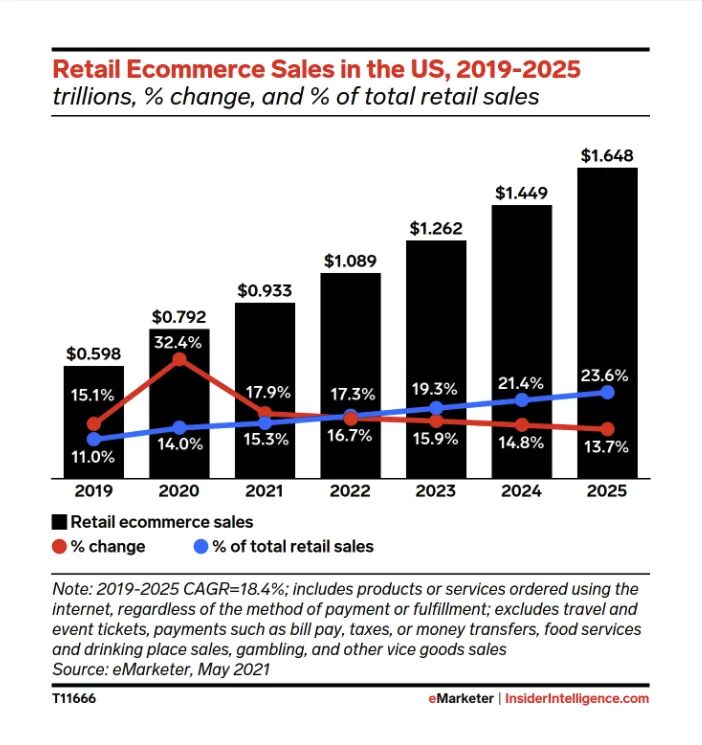
That acceleration due to COVID-19 “has forced everyone to operate at a much higher level of digital maturity,” said Sharon Gee, General Manager, Omnichannel at BigCommerce. “To succeed today, retailers need to put a stake in the ground and define a unified channel strategy from a digital and physical perspective.”
The move from offline to online channels wasn’t the only behavior shift.
Consumers favored different products and services than usual, tried new brands or retailers, and engaged in the shopping process with new constraints — e.g., finding stores with curbside pickup or delivery options.
“Marketers got to see a new type of behavior in customers and if they were doing their homework, they got to understand something different about them,” said Andrew Kandel, head of sales for North America at Waze. “There will be a return to normalcy, but there will be an evolved customer that sees the world differently.”
Why is Omnichannel Commerce Valuable for Retailers?
In short, the acceleration in consumer behavior change in 2020 has made an omnichannel strategy more important than ever.
In research conducted by BigCommerce and Retail Dive in 2020, 46% of retail executives said they planned to increase their investment in commerce retailing moving forward, compared to their plans prior to COVID-19.
Why? As Andrew Lipsman wrote in a May 2020 report on Frictionless Commerce: “The timeless truths of retail are that consumers will always want better prices, selection and convenience. With the internet having already driven major progress on the first two customer needs, attention is now turning to convenience.”
Ultimately, an omnichannel strategy can help drive increased sales and profitability. An eMarketer report found that streamlined digital experiences, curbside pickup and touchless checkout contributed to increased shopping frequency and incremental sales.
Here are some of the factors that make omnichannel so valuable.
Meet customers where they are.
Consumers have been engaging in transactional activities for thousands of years**.** COVID-19 hasn’t stopped people from transacting — it’s just diverted and dispersed much of that activity across different channels.
Ecommerce became table stakes, social channels leveraged a captive audience to deploy new commerce features, and marketplace traffic surged.
Where customer journeys used to be relatively linear, today they’re anything but. People are discovering new brands and products in all kinds of new ways — Facebook and Instagram ads, Google Shopping, Amazon and other marketplaces, product reviews, in-store discovery, word of mouth and more. They may encounter your brand on their desktop computer, a television or a mobile device.
Showing up where your customers are makes the shopping journey more convenient for them. That convenience is more important than ever, in a world changed by COVID-19 — but then again, it always has been. According to a survey conducted by NRF prior to the pandemic, 83% of shoppers indicated that convenience while shopping was more important to them than five years prior.
“Shoppers want the logistics of their lives to be as simple as possible. A strong omnichannel strategy is sensitive to changing consumer behavior and puts the technology and operations in place to meet customers where they are — and where they want you to be,” said Sharon Gee, General Manager, Omnichannel at BigCommerce.
Stand out in a crowded playing field.
With more retailers vying for online attention, standing out is critical to ultimate success and requires a more resonant brand, better shopping experience and excellent service.
Businesses that are able to pivot to an omnichannel method of online shopping can immediately set themselves apart from other brands, especially those reluctant to leave the traditional brick-and-mortar store experience.
With so many competitors in the retail space, why wouldn’t companies look for an edge anywhere they can? A move to omnichannel is an immediate separator. It can provide your existing customer base with a boost, while opening yourself up to a whole new market.
To truly stand out, you’ll need to adapt to new consumer needs and behaviors, and recalibrate your understanding of your target consumer. Some of what you’ve always known about your customers may have changed — use data to understand if you’ll need to rethink any of the following:
Product assortment
Sales channels
Advertising channels
Messaging
Doing this well and consistently will give you a better chance of weathering any unforeseen changes.
Optimize your business with data and analytics.
With such a sudden and drastic change in consumer behavior, some retailers may need to adjust their sales and marketing channel mix to optimize for the new reality. Understanding your data will help you identify where and how to focus your energy.
By controlling your brand’s data stream, you can better view your marketing efforts across different platforms, whether through your site, social media streams, retail stores, or even through customer engagement. Knowing why customers make the decisions they do is critical to your success.
The move to omnichannel does come with its challenges as well. With consistent collaboration needed across channels, optimizing your data can streamline the process and ensure that mistakes aren’t made and information isn’t missed.
A comprehensive, integrated omnichannel strategy empowers you to centralize data from all your sources and channels to determine the best ways to balance inventory, meet customers where they are and provide the best service, wherever they shop.
Personalization.
One of the calling cards of an omnichannel approach is that businesses are able to collect data from multiple user touchpoints, from the physical store to an online store.
By leveraging the data collected, you can gain greater insights into what individual customers are looking for and tailor your messaging and marketing strategy accordingly.
Furthermore, you can even build a curated experience for each shopper with the right system in place. This is especially valuable when considering that 74% of customers like the idea of websites curated specifically for their interests — and may leave if it doesn’t.
Like anything else, customers want to feel valued. With a personalized experience, you’re letting them know that they are your number one priority.
Steps for Building an Omnichannel Strategy
Creating a personalized customer journey across all relevant marketing and sales channels as part of an omnichannel strategy is also referred to as orchestration.
Your specific process for orchestrating your omnichannel strategy will be unique to your business because you’ll choose the sales and marketing channels that best align with your goals and objectives. Thus, your operations will vary based on your unique needs.
1. Segment your customers.
You can segment your customer base in a number of different ways — you’ll have to determine which will work best for your business. Also known as market segmentation, the goal is to identify distinct groups within your target market so you can further personalize your offering to them.
Why is this valuable?
Segmenting your customers allows you to build a better, more tailored strategy to reach different groups instead of a broad, one size fits all, option.
Some of the factors by which some merchants segment their customers include:
Income range.
Geographic region.
Generation (e.g., millennial, Gen X).
Online behavior.
Values.
Interactions with marketing campaigns.
Once you’ve identified clear customer segments, you can dig deeper into how to position your offer to each one.
2. Determine which channels each customer segment uses.
Depending on their size and target, different merchants will adopt new channels in similar ways.
They often start with the broadest possible net (Amazon, Google, Facebook) and then, as they grow, become more targeted and specific, growing into channels like Mercado Libre for LATAM, Snapchat or TikTok for Gen Z, etc.
Let’s say you’re planning to buy a gold watch. There are countless places you could look, depending on what type of watch you’re looking for.
Interested in a previously owned, antique or hard-to-find watch? You might go to eBay.
If your taste is more modern and fashion-forward, maybe you’ll browse Instagram for ideas.
Looking for something extremely high-end? You may want to go into a brick-and-mortar jewelry store to see and feel their wares in person.
It’s like that with any product and any target market. To reach consumers in the right place at the right time, you have to know how they behave, where they browse, where they buy and what motivates them to purchase.
A mix of qualitative and quantitative data can help you make measured decisions about your most important channels. Talking to customers can provide a multitude of qualitative insights and give you a more acute sense of empathy for them. Still, tracking key performance indicators will round out the picture forming in your mind.
Use analytics to determine which of your channels are the most profitable, the most efficient and/or the ones who acquire the newest customers. Then, put most of your focus on ensuring the best possible shopping experience on and among those channels.
3. Map the customer journey.
Knowing your customers and which channels they tend to shop in is important, but it isn’t the whole story. Businesses need to know the how and why of what the customer is doing.
Being able to map out the customer journey can reveal insights into a customer’s thought processes and let organizations know what is working for them and what isn’t.
Let’s think about that gold watch again, and pretend you’re looking for the fashion-forward option. Here’s one possible journey from research to purchase:
Search “gold watches” on Pinterest.
Research a few eye-catching brands’ Instagram profiles.
Start seeing retargeting ads for a number of jewelry brands — which you click on, if they catch your eye.
Sign up for email newsletters from a few brands’ websites.
Search “[brand name] reviews” for some of your top contenders.
Finally, narrow down your options and make a purchase from the brand’s ecommerce site.
There are countless ways that the journey could have been diverted or reordered at any time — but the customer still expects a seamless experience. That’s one of the biggest challenges of omnichannel. As this McKinsey article reinforces, “Since customer journeys aren’t simple and linear but a series of handoffs between traditional and digital channels that can vary significantly by customer type, an effective strategy requires an in-depth understanding of what customers truly want.”
4. Provide cross-channel customer support.
Today, consumers want to purchase where and how it’s most convenient — and the same goes for customer support. If you’re going to double down on having a presence on multiple channels, you need to make sure you can provide customer support.
Consider the following example:
There is a customer who found a product through a digital advertisement on Facebook, clicked on the link and went to the vendor’s website. However, the link they clicked on isn’t working.
They wanted that specific item and don’t know how to find it. Who do they go to? Facebook or the vendor themselves?
With disparate support staffs, that customer could be lost in limbo and may not buy the product — a conclusion that leaves everyone dissatisfied.
By constructing a cross-channel customer support system, organizations can skip these kinds of issues and help each customer out, regardless of where they are on the customer journey or which channel they are using.
Providing consistent, quality support that your customers can count on may help increase their lifetime value and solidify them as loyal customers.
5. Integrate your technology.
One of the most fundamental reasons to closely integrate as much of your tech stack as possible is your inventory.
As you start selling on multiple channels, you’ll want a unified view in real-time of every piece of inventory you have available. Similarly, you’ll want a single source of truth for product information — such as a PIM or comparable solution — so you don’t have to enter product information individually on every channel where you sell.
A data feed management service like Feedonomics can help unify your data across multiple channels, while a multichannel selling tool like Codisto allows you to link and sync accounts across Amazon, eBay, Google and Walmart.
The benefits go on. When your marketing and ecommerce efforts are closely tied together, you can aggregate your most essential data to better assess performance and identify opportunities. Seamless hand-offs among channels are a massive boon for customer support as well. If your phone agent already knows about the email thread with a particular customer, they can pick right up where the email left off. A recent McKinsey article identifies customer support as an area with huge potential to increase customer satisfaction, if executed well: “Advanced analytics and new technologies, such as predicting issues before the customer explains the reason for the call, allow first movers to create ‘wow moments.’”
6. Take advantage of automation.
Khe Hy teaches about a productivity concept of around $10,000-per-hour work. The idea is to identify the work you do with the highest leverage.
What really moves the needle? What benefits compound over time?
The more you can focus on those high-leverage activities, the more you’ll be able to drive your business forward.
Repeatable processes that require little to no critical judgment are not $10,000-per-hour work — and that’s where automation comes in.
But that’s not where automation stops. Here are a few more examples of how automation can give you more control over your business:
Use a chatbot to answer routine customer questions and concerns so support representatives can provide more focused attention to more complex issues.
Prioritize a tech stack that supports seamless integrations so you always have a real-time view of your business and make decisions based on aggregated data.
Set up behavioral triggers to deliver more personalized marketing across the customer journey, so prospective buyers see the right messages at the right times.
Using abandoned cart programs, marketers can encourage individuals to return and finish purchases, regardless of the channel in which they began the interaction.
Automated follow-up messages can thank customers for their purchase and offer items for future purchases, such as a discount.
7. Make testing a habit.
Testing isn’t a one-and-done activity relegated to the last few days before launch. Testing should be a systematic process in your business — especially if you’re undertaking the complexity of an omnichannel journey.
What does this mean?
For omnichannel retail, testing should be a continuous process that delves into each part of your site — from desktop browser testing, where you can see how customers interact with your store and make their purchases, to software testing, where you can see how your site handles customer decisions.
Test often and test everything. Experiment with different subject lines, content, format, offers, etc. Test your segments and determine whether you can segment in even more detail for even better targeting.
At a certain point, testing should become an automated process, informing you in real-time how sections of your business are performing and where improvements can be made. Gathering data at every touchpoint will be critical to making the decisions that elevate your business. Make sure you have a platform and solutions partners that make it easy to aggregate all your data sources and glean insights.
How Omnichannel Marketing Has Changed
Like many online institutions, omnichannel marketing and retailing received a significant boost in the online market boom of the post-COVID world.
As consumers found themselves at home and unable to go to the store, retail organizations were faced with the decision: would they modernize or would they dissolve?
Most businesses saw the writing on the wall and began a massive pivot to online retailing. In fact, the share of omnichannel services offered by retailers within the United States grew significantly through various methods.
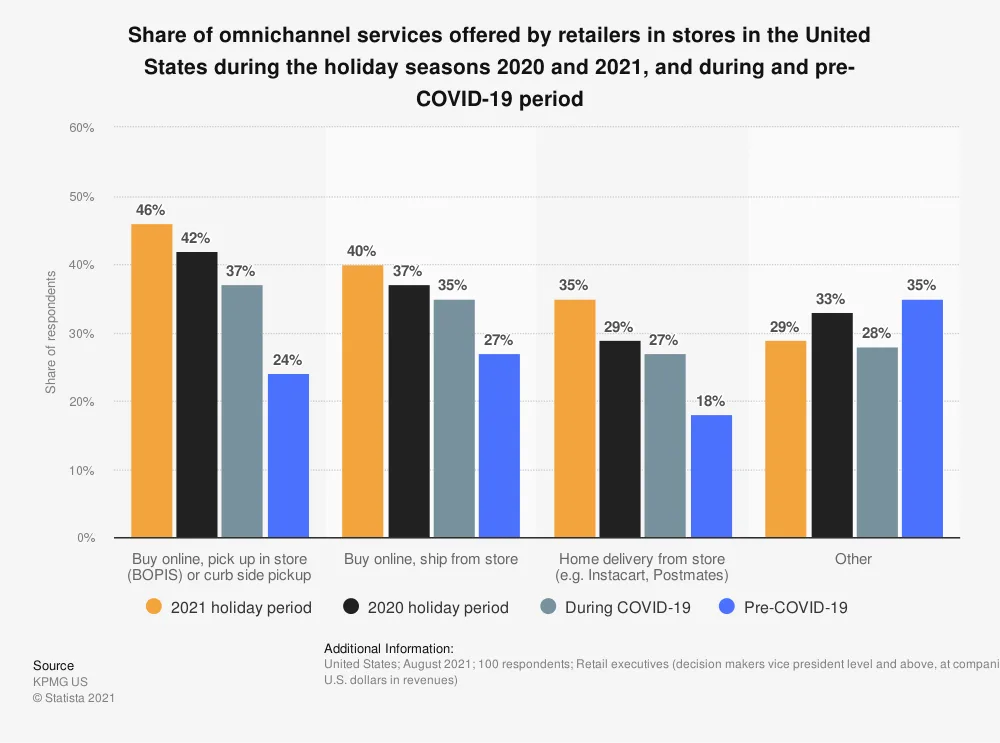
Things like buy online, pick up in-store (BOPIS), buy online, ship from store, and even home delivery from store grew from luxuries to must-haves for businesses as customers have grown to prefer the services and even rely on them.
Consumer expectations have changed because of COVID-19, and it shows no signs of slowing down or ever going back.
Want to Expand Your Omnichannel Strategy?
Download our Omnichannel Guide and see how easy it is to grow into new marketplaces, social channels and search engines.
The Final Word
Customers expect seamless omnichannel shopping experiences. Today's retailers find themselves adapting to new consumer needs and behaviors and recalibrating their understanding of their target consumer.
An omnichannel strategy must be holistic and comprehensive. It depends on a strong foundation, supported by the four pillars of sales channels, marketing and advertising, operations, and shipping and fulfillment.
"An omnichannel transformation is the only way for a company to address rising complexity, provide an excellent customer experience, and manage operations costs," write analysts at McKinsey. With the right choice of omnichannel marketing software, you can manage all activities on all your channels, all in one place. You'll only be limited by your vision as a marketer and entrepreneur.

